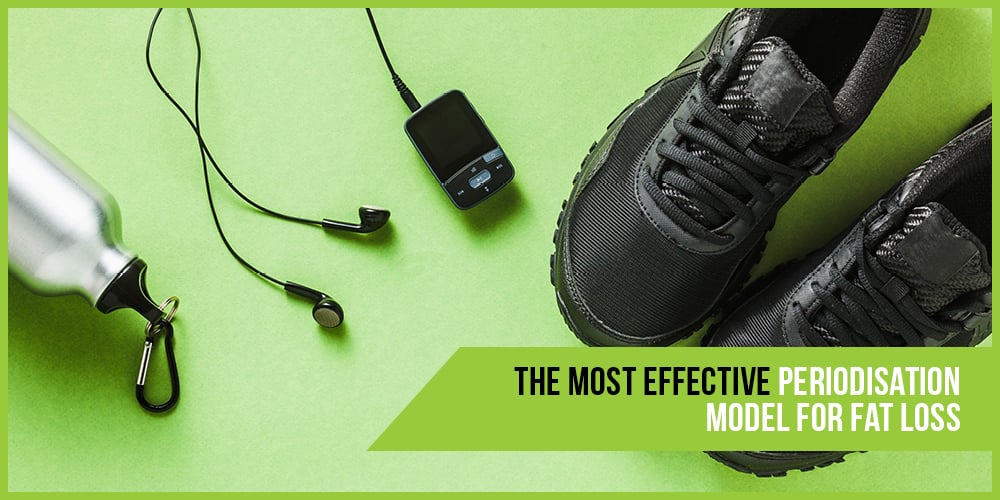By Stefan Ianev
 The most effective periodisation model for fat loss
The most effective periodisation model for fat loss
When it comes to periodisation specifically for fat loss, the most important variable that we need to account for is the cumulative energy deficit from physical activity and diet combined.
As a person loses body weight, their physical activity thermogenesis – be it from exercise or spontaneous activity – will automatically decrease because they are carrying around less weight. That means they will need to exercise more or get in more steps throughout the day just to burn the same amount of energy as before.
In addition to the decreased energy expenditure from carrying around less weight, the body may also compensate by becoming more metabolically efficient and using less energy to perform the same amount of work [1,2]. The increased metabolic efficiency, termed adaptive thermogenesis, is believed to be due to decreased brown adipose tissue [1,2].
And this is where fat loss periodisation comes in, because we need to account for the increased metabolic efficiency and reduced energy expenditure in response to caloric restriction.
A wise strategy that we use with most of our clients is to start a fat loss cycle with the minimum amount of physical activity and highest amount of calories possible. This way you have more room to increase physical activity and reduce calories later on. The mistake most people make is trying to play all their cards at once, and as a result they end up plateauing very quickly.
We prefer to track the total daily steps inclusive of exercise so that we can quantify physical activity level for the entire day. That is because structured exercise can reduce spontaneous activity in some people, and lead to a lower total daily energy expenditure [3,4].
Some coaches prefer to track steps separate from cardio because the energy expenditure for a given distance is slightly greater for higher intensity exercise. However, the difference is negligible at best [5,6]. For the most part, higher intensity exercise is just more time efficient than walking.
We prefer total daily step count because it is more flexible. If a client is low on steps for a given day and they are short on time, they can supplement with extra cardio to hit their step target.
We typically start our clients out on around 8-10 thousand steps per day and titrate up every 2 to 4 weeks to offset the decrease in energy expenditure. By the end of a 12-week fat loss cycle a typical client might be up to around 14-16 thousand steps per day. For some clients that have a very efficient metabolism, the increase in activity thermogenesis often needs to be accompanied by a concurrent reduction in energy intake.
Also, for some clients increasing activity thermogenesis is not an option because they are limited by time. In those instances, we need to rely on a progressive reduction in caloric intake, which is usually larger than if we were also titrating up physical activity.
We generally don’t keep clients on a diet for more than 12 weeks at a time, in order to offset the increased metabolic efficiency. We will typically take them out of the diet for a couple of weeks and bring their steps back to baseline to reset. If they have more weight to lose, we will then bring them back into a deficit and start titrating up their activity again.
With leaner clients we often need to take them out of the diet every 6 to 8 weeks because the metabolic adaptations are more pronounced, and they are at greater risk of muscle loss [7]. This is usually accompanied with periodic 2-3 days refeeds every 5-12 days during that period.
For a more detailed overview of fat loss periodisation, we recommend checking out the Performance Nutrition Level 1 and the Performance PT Level 2 Certifications.
References